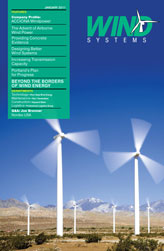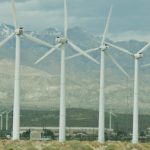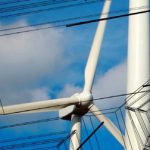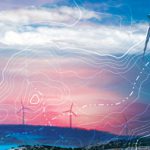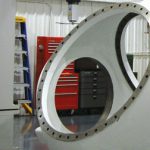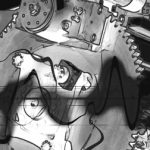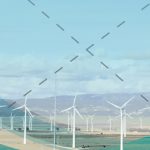You might be an expert on conventional horizontal and vertical wind turbines, but have you heard of airborne wind? If the pace of innovation in the nascent airborne wind industry is any guide, 10 years from now “airborne wind turbines” could become a household word. Why? In most of the Northern hemisphere, just a few thousand feet above our heads blows a vast untapped resource on par with some of the best ground-based wind sites in the world. Go 10 times higher into the troposphere and you’ll find the highest density source of renewable energy in the world.
Harnessing high altitude airborne wind may take some major leaps, but closer to Earth airborne wind is on track to become a cost effective, practical, and utility scale-ready segment of the wind industry within the decade. Most airborne wind companies have their sights set on the “boundary layer” winds that blow a few thousand feet above ground level. Bringing utility scale airborne wind to market at those altitudes doesn’t require any breakthroughs, just solid engineering work, R&D investment, and the support and guidance of the experienced ground-based wind community.
At least 30 startups and research groups around the world are busy at work to make airborne wind a reality. An abundance of commercial off the shelf (COTS) technologies and tools are enabling them to achieve a remarkable pace of innovation. Over the years their prototypes have proven the basic principles of airborne wind and grown into the tens of kilowatts. The next step for the industry leaders is to prove their systems can perform reliably during long-term continuous operation in the field.
Airborne wind is in its infancy, but if it makes it off the ground it would help extend the reach of the wind industry to new locations where ground-based turbines aren’t cost effective today. Makani Power, a well-funded leader in airborne wind, believes its Airborne Wind Turbine (AWT) technology can extend the developable terrestrial wind resource area by ï¬ve times, to over 80 percent of the U.S. land surface. Paired with ground-based turbines, airborne wind promises to help keep the power lines humming by reducing the variability of production, and by “going vertical” to extract more energy from a given land area.
Innovation through Assimilation
Airborne wind borrows many established technologies from the rest of the wind energy industry, sometimes even using the same type of generators, gearboxes, and grid-tied power converters. Table 1 compares similarities and differences between ground-based and airborne turbines. The main feature that makes airborne turbines different is the way they extract energy from the wind. Instead of a large steel tower structure, a tether cable anchors the system to the ground. Rather than rotating blades, specially designed airfoils sweep a path across the sky to extract energy.
This ability to sweep through a larger cross section of the sky is one of the fundamental attractions of airborne wind, enabling a modestly sized airfoil to extract large amounts of energy from the stronger, more-consistent winds found higher above ground. Like the tip of a conventional turbine blade, the airfoil ï¬ies crosswind in a circle or figure-eight pattern at many times the speed of the wind, as shown in Figure 1.
Airborne and ground-based turbines operate on much the same aerodynamic principals. Just like conventional wind energy, power production is proportional to one-half the air density times the cube of wind speed (Equation 1).
Thus, a small increase in wind speed makes a big difference in power, since doubling wind speed yields eight times more power. Like the tip of a conventional turbine blade the airfoil wing travels at high speeds through the air, using aerodynamic lift to efficiently extract energy. At a wingspan comparable in length to a wind turbine blade, an airborne turbine can sweep a larger region of the sky to access nearly 10 times more energy. Airborne turbines can also move up or down in altitude and adjust their flight path to adjust for a wide range of wind conditions. Mechanically, airborne turbines benefit from being cushioned in a pillow of air during flight rather than being rigidly connected to the ground—however, the g-force loads caused by their fast moving patterns can put significant stress on airfoil structures and tether lines.
Operating at Altitude
By going up above the reach of ground-based turbines, airborne machines chase the consistent and stronger wind resource at altitude. At 2,000 feet wind speeds above 8 m/s are blowing more than 40 percent of the time at most locations in the northern hemisphere. Furthermore, power densities (kW/m2) are on par with the world’s most favorable sites for ground-based wind, as illustrated in Figure 2. Thus, airborne turbines should expand the reach of the wind industry into new regions and could be located closer to population centers.
Although boundary layer winds provide the “low hanging fruit” being chased by most companies today, the most elusive prize is found in the jet stream winds of the troposphere. At 35,000 feet, average power densities soar beyond 20 kW/m2 and the total available resource is measured in thousands of terawatts (TW), hundreds of times higher than world energy demand. “From an environmental perspective, getting huge terawatt-scale renewable systems is really important,” according to Ken Caldeira of the Carnegie Institution of Washington at the Airborne Wind Energy Conference 2010. “The idea that airborne wind power is of the scale to meet civilization’s needs is sound. Airborne wind energy is one of the few civilization scale power generation technologies.”
Caldeira is a world-renowned climate scientist who has studied the potential environmental impact of extracting civilization scale power levels from high altitude wind. His models indicate that extracting 18 TW, enough energy to satisfy world energy demand, would itself have no significant impact on climate, resulting in a negligible cooling effect of 0.04 oC. Of course, switching the world to cheap, clean, carbon-free power would certainly have a positive impact on the environment.
Harnessing high-altitude wind is a bold vision but brings with it a wide range of technical and logistical challenges, from finding tether lines that are strong and light enough to gaining Federal Aviation Administration (FAA) approval and airspace clearance. Even at boundary layer altitudes, FAA permitting questions need to be resolved. At least for now, making tropospheric wind commercially viable is likely to remain elusive. Even companies with their sights set on the troposphere plan to start at more modest heights. “At 1,000 feet wind is profitable on 70 percent of the world,” says Pierre Rivard, CEO of MAGENN Power, a company developing lighter than air generators resembling blimps that also double as floating cell phone towers.
Exploring the Design Space
Looking top down, there are three primary ways to classify airborne wind systems: 1) altitude: low, boundary layer or troposphere; 2) type of airfoil: lighter or heavier than air, rigid or flexible, drag, lift, or rotorcraft based, and; 3) generator location and type: ground or airborne, gearbox or direct drive.
Like the early days of the ground-based wind industry, researchers in airborne wind are testing every possible design choice to find out what works best. Even with computer models there’s no substitute for a physical prototype. Working prototypes are also going a long way toward convincing skeptics and attracting investors. “I think people were more skeptical a few years ago, but today there are many startup companies working on this,” says Archan Padmanabhan, director of business development at Joby Energy. “Over the past several years, the industry has seen many prototypes, and we’ve seen them growing larger into the tens of kilowatts. At Joby we started with ground-based generator designs, tested autogyro concepts, and finally moved to a winged airborne generation system with multiple rotors and power sent down the cable. Now we’re exploring ways in which the wing can be structured to simplify takeoff and landing.”
Overcoming Technical Challenges
The idea of using a “tethered airfoil” as a way to generate power isn’t new. The fundamental concepts were patented in the late 1970s and are now public domain. Lawrence Livermore National Lab researcher Miles L. Loyd pioneered the fundamental mathematical equations for airborne wind, developed computer models, and validated them with small experimental prototypes. His seminal paper, “Crosswind Kite Power,” was published in the June 1980 issue of the Journal of Energy.
So why hasn’t airborne wind reached commercial viability? The answer has to do with complexity, cost, and Moore’s law. Just 10 years ago the processing, instrumentation, sensors, and control software were prohibitively expensive. Today exponential increases in embedded computing power (Moore’s law), instrumentation technology, and the availability of high level, high productivity software tools and rugged embedded computing platforms enables airborne wind companies to build and test their prototypes by the dozen, using readily available COTS technology and high level software tools to shrink the time between design, prototype, and field deployment.
“Would airborne wind have been cost effective 10 years ago?” Padmanabhan asks. “No. It’s definitely advances in technology that make it cost effective today, from inexpensive aircraft materials to low-cost GPS sensors, autonomous flight software, and the increasing power of embedded computing. The biggest technical hurdle that’s been overcome is in the area of control systems. Thanks to the aerospace industry, flight control systems have become a lot more robust than at any time before. Commercial airlines today are primarily flown on autopilot and people trust those systems—no one expects airplanes to come crashing down. The aircraft industry has a lot to offer, and we are learning from it.”
Windlift, another airborne wind startup, is developing mobile airborne wind turbines that have attracted significant interest from the U.S. military because their high-power density makes them a future replacement for diesel generators and the vulnerable fuel convoys that must supply them. Windlift uses the National Instruments’ LabVIEW graphical programming language and NI CompactRIO ruggedized embedded instrumentation systems for control and dynamic monitoring, as shown in the interface for their 12 kW prototype system (Figure 3). Control Design Engineer Matt Bennett explains how commercially available tools play an important role in their development. “Having a COTS real-time system is a big enabler,” he says. “Actively flying the airfoil under high load is a real challenge and the NI CompactRIO system takes care of all of the signal processing and feedback control tasks required to keep the system stable. We extensively use the field programmable gate array, or FPGA, which handles tasks completely in parallel. The LabVIEW FPGA technology is indispensible. There are a lot of things it does that we couldn’t do any other way.”
Power Generation Technologies
We are all familiar with the spinning blades of ground-based turbines. So how do airborne turbines generate power? Although techniques vary widely—from tethered rotorcraft to lighter than air spinning blimps—the most mundane and popular techniques leverage one of two basic principles: 1) a ground-based generator attached to the tether cable winch which produces power as the kite pulls out the cable, or; 2) a set of high speed wind-driven propellers onboard the airfoil that drive small airborne generators. Table 2 compares the pros and cons of these popular approaches.
Ground-based generator systems, like those being developed by Windlift in the U.S. and KITEnergy in Europe, produce power when the airfoil pulls a tether line. The torque and velocity of the tether cable produces electricity by spinning a generator that is attached to a rotating winch drum. As illustrated in Figure 4, there are two distinct modes of operation—the traction phase, and the recovery phase. In the traction phase the airfoil slowly pulls the tether line and electricity is produced until the maximum tether length or altitude is reached. Then the recovery phase begins, during which the airfoil is flown back while the tether cable is winched in. Recovery actually uses a small amount of power, as the generator becomes a motor drive to retract the cable. Then the process begins again.
For steering, the airfoil wirelessly transmits GPS coordinates and roll, pitch, and yaw information from an inertial measurement unit (IMU) in the air to a kite steering unit (KSU) on the ground. KITEnergy uses the National Instruments PXI platform and LabVIEW Real-Time software as the ground control unit, which acquires and processes the sensor signals and executes advanced control algorithms to command the winch motor-generator and steer the kite. “Theoretical, numerical, and experimental results so far indicate that KITEnergy technology could provide large quantities of renewable energy, available practically everywhere, at lower cost than fossil energy,” according to KITEnergy founder Mario Milanese.
Other companies, such as Joby Energy and Makani Power, are pursuing airborne generator designs. In this case a number of small propeller-driven generators located on the aircraft are used for power generation, and power is sent down the tether cable to the ground. Airborne generator systems are typically more like an aircraft and less like a kite, featuring an onboard computerized autopilot system and flight control surfaces to control roll, pitch, and yaw like elevators and ailerons. A great deal of engineering effort at airborne wind companies is focused on perfecting these flight control systems and making them robust to any sort of problem, from gusting winds to actuator and sensor failures. The Makani Power system is being designed so it can even disconnect from the tether and land autonomously if needed. Any control or aerospace engineer looking for a fascinating challenge should consider working in the airborne wind industry. Figure 5 illustrates the salient features of the Joby Energy design, which is capable of vertical takeoff and landing and uses high-speed crosswind flight patterns to maximize energy output.
Not surprisingly for such a nascent segment of the wind industry, the dust has yet to settle on which design choices prove to be the most practical and cost effective. It is way too early to call this race, but my guess is that the leading contender today is a boundary layer system with a rigid airfoil that’s carefully designed to maximize aerodynamic efficiency and an onboard flight control system. Figure 6 Airborne wind has a way to go before becoming a mature technology, but one thing is for sure—it’s an exciting time. Each new prototype that takes flight helps to convince skeptics and investors alike that above-ground wind power isn’t such a crazy idea. If you’re a professional in the wind industry, consider lending your talents to help airborne wind get off the ground. To learn more visit the Airborne Wind Energy Consortium Web site at www.aweconsortium.org.



















